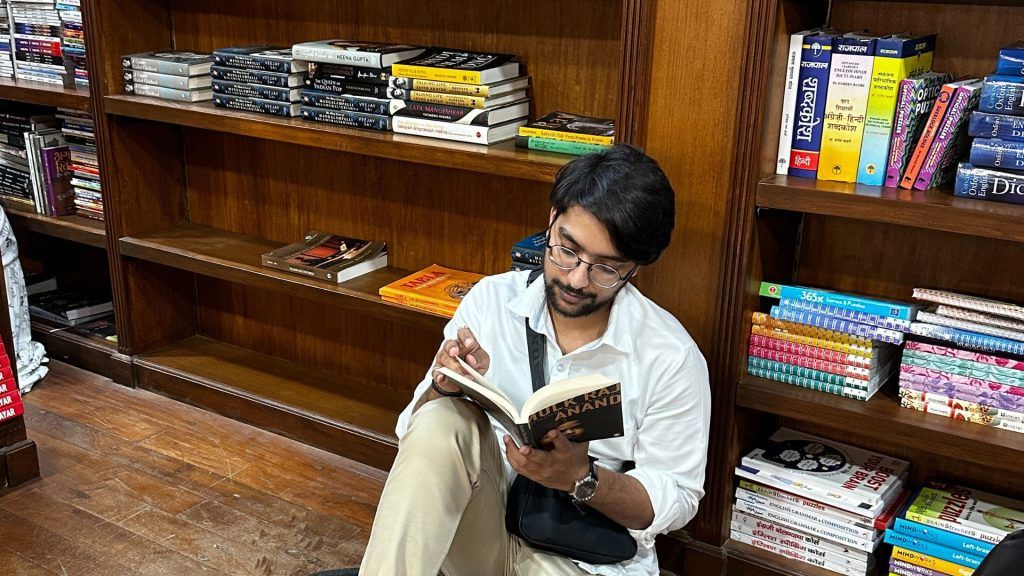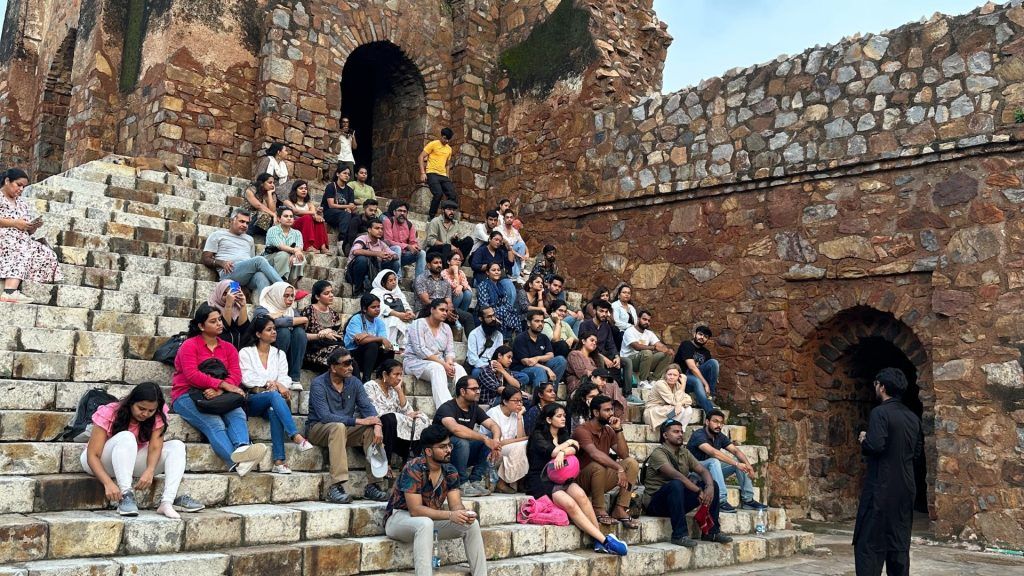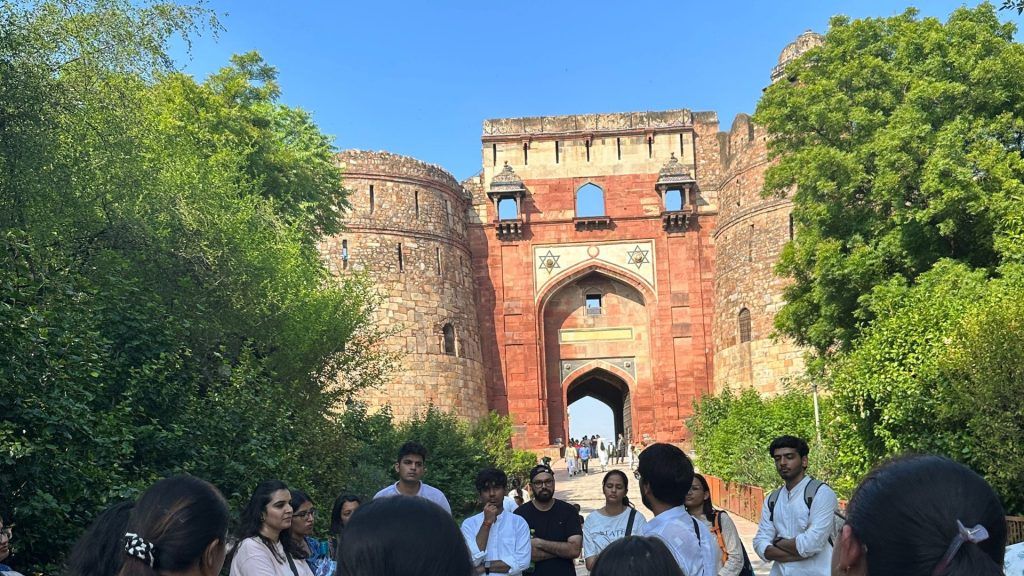
Championing an age-old form of storytelling in the modern era of social media, anthropologist Anas Khan gives a 60-degree insight into Old Delhi, from the 16th to the 19th century.
Anas Khan, popularly known by his Instagram handle Unzip Delhi, provides a unique lens through which we can explore the intricate layers of the national capital’s history. He explains that anthropology, particularly through the discipline of archaeology, has unveiled remarkable insights into prehistoric Indian cultures by capturing the stories that are often left unheard. In a chat with Travel+Leisure India & South Asia, he digs deeper into the art of storytelling.
Excerpts from the interview with Anas Khan aka Unzip Delhi:
T+L India: What sparked your passion for heritage and cultural preservation of Indian History?

Anas Khan: I am an anthropologist and I belong to Old Delhi. My family has been living in this part of the city for over 250 years. I grew up hearing stories passed down across generations. Thus while in college, I chose to document the culture of Old Delhi for my research paper–that’s when I started to collect a lot of oral tales that I had heard in my childhood. The journey of documenting these stories led to me passionately scout for Indian history and take part in preserving them.
T+L India: What specific historical period or event do you specialise in, and why does it hold particular interest for you?
Anas Khan: I specialise in the period ranging from the 16th to the 19th century, which is roughly the period of Mughal rule in Northern India. This is also the period when India saw a glorious era and simultaneous downfall as well. It’s replete with a treasure trove of heritage and lessons.
An interesting aspect that I love, and am currently focused on, is that when the Mughal regime was flickering in its last days, a cultural renaissance started in Delhi. Then, the focus was on poetry, art and culture; the biggest names in Urdu poetry are from this era. A lot of colonial paintings were being made and the freedom movement was brewing.
T+L India: Could you share an example of a lesser-known historical fact in Delhi or an event that you believe deserves more attention?

Anas Khan: Interestingly, you ask of it now as there’s this special ritual from Mughal India that is now celebrated as a festival. It is called Phoolwalon ki Sair and it will take place next month.
Mirza Jehangir, the prince who was to be the last heir apparent, made the mistake of irking the British resident. Hence, Mirza Jehangir was arrested and sent to exile from Delhi. His mother prayed with utmost devotion and pledged that if her son came back, she would offer a fan at the temple of Yogmaya and a blanket of flowers at the Sufi shrine of Khwaja Bakhtiyar Kaki in Mehrauli. Miraculously, her son came back. Ever since every year, an entourage proceeds from the Red Fort to Mehrauli to make this offering. This tradition continued till 1856 and then was revived in Independent India by the first Prime Minister, Jawaharlal Nehru as this festival was a symbol of religious integration and secularism that India preaches. It is still celebrated with much pomp and show every year in Delhi.
T+L India: How has the field of history evolved with advancements in technology and access to digital archives? How do you incorporate these changes into your work?

Anas Khan: With new technological advancements, we have access to tons of digital archives at our fingertips–like the British archives which have a ton of Mughal documents–which we didn’t in the past. With increased resources at our disposal, history as a subject is also evolving. Paired with the power of social media, it is becoming more accessible to the public. When I started, historical blogging wasn’t a thing, but making Indian history more palatable in the form of stories changed the entire game. Now it is a genre that’s becoming increasingly popular among the masses.
T+L India: How do you make Indian history engaging and relatable to a wider audience, especially for those who might not have a strong interest in the subject?

Anas Khan: I use the age-old technique of storytelling which has been the most popular form of entertainment before the advent of radio, TV and OTT platforms. The medieval cities of the world would have storytellers in all the public squares. They would share tales of travellers as well as royalty. I used the same technique and converted various aspects of history into stories to make it more palatable for the audiences online.
Moreover, the concept of heritage walks brought back the era of the storyteller wherein we stand amidst the very walls which have witnessed these stories first-hand. This imparts a beautiful aura, almost recreating the charm of those days gone by.
T+L India: What challenges do heritage sites face in terms of preservation and conservation, and how do you contribute to addressing these challenges?
Anas Khan: The main issue is that there is no awareness about these sites in the local population of Delhi. Some heritage sites have survived more than 800 years without any intervention from organisations because the local population would take care of them. But the partition of Delhi changed everything. Now Delhi, as a city, holds the biggest migratory population, many of whom are unaware of the importance of these sites. With more and more people settling here, there is rampant encroachment.
My team and I try to run campaigns in different areas to promote awareness. We also highlight the same on social media. Heritage walks are also an attempt towards the same. Moreover, whenever we see any illegal occupation, we report it to the concerned authorities.
T+L India: Which neighbourhoods in Delhi do you cover in your heritage tours?
Anas Khan: Almost the whole city but mainly the zones which are known as the eight main capitals of Delhi– starting from the southmost ramparts in Mehrauli up until Lutyens Delhi and Old Delhi.
T+L India: Your favourite historically significant locations in Delhi that you enjoy exploring, and why?
Anas Khan: I enjoy the most when I’m exploring Old Delhi, mainly because this is a living historical city that has imbibed the culture passed down over centuries. The awesome street food is the cherry on the cake!
T+L India: Any hidden or overlooked heritage sites that you’ve discovered during your explorations?
Anas Khan: Zafar Mahal and Tughlaqabad Fort.
T+L India: What are some of the unexplored places on your bucket list that you would like to visit?

Anas Khan: There’s a 14th-century haunted palace in the Southern Ridge forests known as Malcha Mahal. The stories associated with the place are quite scary. While its remote location initially made me quite sceptical about my safety, I am planning to host a group exploration soon.
T+L India: What advice do you have for someone who wants to start exploring and appreciating the heritage of their area?
Anas Khan: Spend some time in those places. We live in a world where we are constantly hustling and we don’t know how to slow down. Try not to visit these sites just to document or create content, but to feel the stories that emanate from those stones. It will give you a deeper perspective and inculcate a passion which won’t ebb away. Trust me, you’ll end up falling in love!
T+L India: In a sentence, tell us Why You Love India.
Anas Khan: I love India because of its sheer diversity. Be it in terms of landscapes, climates, cultures, traditions, food, attire, language, Indian history or art, India has everything within its realms and that is such an underrated blessing for us!
Related: Explore The Timeless Appeal Of Orchha, An Indian Historical Site In Madhya Pradesh











